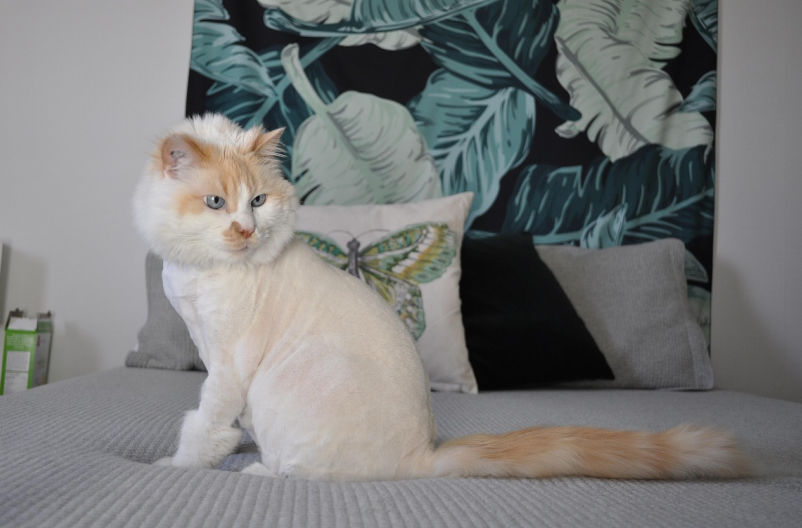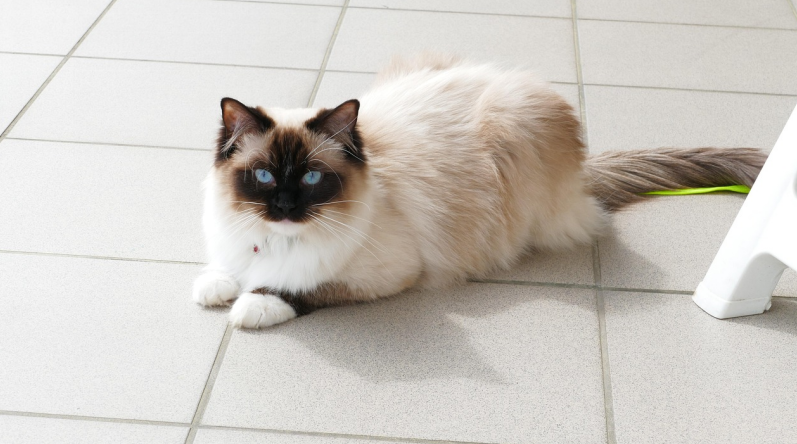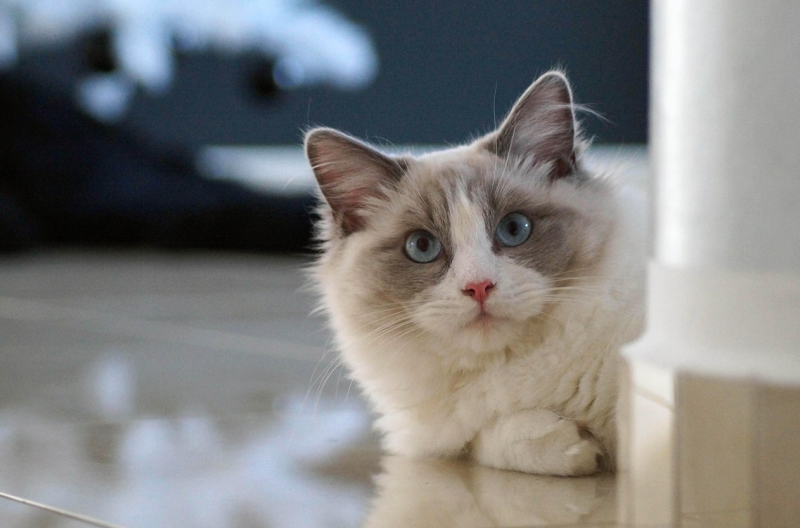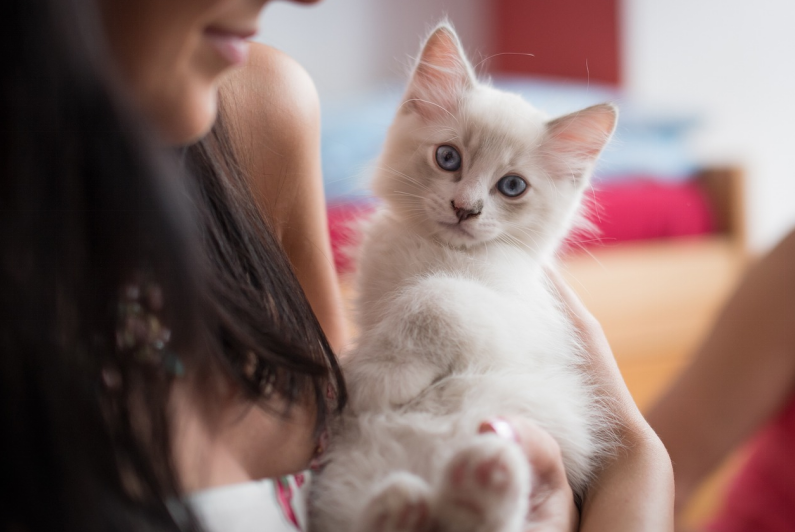| Auteur | |
|---|---|
| basepih | 26 Mar 2025 - 16:45:57 |
| 50 Posts |
Ragdoll cats are famous (or perhaps infamous) for their sweetness and cuteness. Large, with blue eyes and soft, moderately long fur, Ragdoll cat traits are hard to miss out. They're affectionate lap warmers and anything but aloof. They actively seek human interaction and love to be around people. Pick one up, and it'll go completely boneless, just like a ragdoll toy. (And yes, that is where the name comes from.) This guide covers all the physical and not-so-physical characteristics that make these gentle cats special. From looks to personality, health to grooming, here is what you, as a potential owner, should know.  Origin and History of Ragdoll Cats The Ragdoll cat breed originated in the 1960s in California, USA. Its developer, Ann Baker, started the breed. She started with a domestic long-haired white cat named Josephine. Josephine was known for being cuddly and super nice—a real pushover regarding feline personality. Josephine and her descendants had that look you want in a cat: beautiful, smooshy faces and sweet personalities. Josephine had kittens by a rather ordinary-looking house cat. Josephine and her cat's offspring—the first Ragdolls—were used to make more Ragdolls after Baker got them to pose and act like the ideal Ragdoll. Why Ragdolls Are Special What makes Ragdolls so interesting is their sweet, calm disposition. When you pick them up, they go all limp and melt into your shoulders or lap, much like a floppy ragdoll toy. It may mostly be a case of the Ragdoll's breeding line being so good at throwing good-tempered cats, but there's something inherently nice about Ragdolls that just gets under your skin and makes them unforgettable. And because they're super affectionate, they're perfect lap companions. They'll sleep on top of you, beside you, and anywhere next to you. And unlike your average house cat, which is pretty independent, Ragdolls aren't shy about wanting you to pay attention to them. They solicit all kinds of affection and are fine with being adored. Ragdoll Cat Traits: Physical Characteristics  Ragdoll cats are massive and muscular. They have a soft, medium-long coat that comes in different hues. Their striking blue eyes give Ragdolls a signature look. Size Ragdolls are one of the largest breeds of domestic cats. They have a substantial build with broad chests and shoulders. Males can weigh up to 20 pounds, while females usually weigh around 15-18 pounds. The kittens grow rapidly during the first year of their lives. By 8 months, they are almost as large as adults in shape, solid, and ready to fight. They continue to grow until they are around 4 years old, adding girth and weight without adding much more in height. Ragdolls are not really awkwardly large for cats, but they are way too big and heavy for small spaces. Coat and Colors The Ragdoll has a medium-long, silky soft coat that is a little longer around the neck and outer legs. The fur is naturally resistant to matting and tangling, thanks to fine textures that pretty much prevent it from being "matted" and/or "tangled" (unless, of course, a Ragdoll's owner doesn't groom it or is waiting enough time in between grooming appointments for the cat to pull off whatever look it's going for). These cats display one of three coat patterns: ● Colorpoint - Markings of light shade on the face, legs, and tail contrasting with darker body (like Siamese cats). The most common color is a seal (dark brown) point. ● Mitted - White "mittens" on front paws and back legs up to the hocks. The chin and chest are also white. Body and head color can vary. ● Bicolor - Mostly white body with colored head and tail. Around 40% of the body displays color patches. Seal, blue, chocolate, and lilac points are the most popular colors. Other variations include red, cream, and tortoiseshell. Personality and Temperament of Ragdoll Cats  Ragdoll cats have the gentle, docile nature for which they are famous. They adore people and are incredibly affectionate. Because they display puppy-like behaviors, some people refer to Ragdolls as "dog-like cats." Affectionate and Social Nature Being cuddly cats, the Ragdolls act lovingly toward their humans. Following their owner from room to room and wanting to be involved in anything going on are other things that distinguish them from cats, typically regarded as standoffish. They love to mingle with guests and visitors. Other ways they pursue feel-good experiences often involve getting affection, such as cuddling on a lap, getting pets, and snuggling under the covers at night. Ragdolls are thriving on companionship with their humans. And as much time as they are with their humans, they obviously want more. Despite their get-up and go in pursuit of feel-good experiences and more time with their humans, Ragdolls are happy to lounge about and take a route leading down the rabbit hole to a state of catnapping. Gentle and Laid-Back Behavior Ragdolls are beloved for their trademark docile temperament. Adaptable and easygoing by nature, they get along with just about anyone. They are not fazed by introductions to children, other pets, or strangers. In fact, Ragdolls rarely show aggressive tendencies such as biting, scratching, or hissing, even when irritated. Due to their extreme patience, they are well-suited companions for children, disabled owners, and grandmothers. Their dearest characteristic is that they will go all limp when carried. They will not wiggle to get away but rather flop lazily in your arms, which is how they got their name- a "ragdoll." Intelligence and Trainability The moderate intelligence of Ragdolls makes them literate cats. They were not born with the intelligence of the ablest breeds, and they seem to need a little more time and a lot more patience to master basic commands. Ragdolls perform best when taught to do tricks (many of them are actually quite useful) via positive reinforcement. They can learn (with a little effort on the part of the owner and the cat) to fetch toys, walk on leashes (no kidding), and use scratching posts (this one seems natural since most of us seem to be using the nearest piece of furniture as we try to type this). Clicker training is probably among the top three or four best training techniques. Ragdolls are food-driven (though we know some people who have great tricks for getting their cats to do great stuff without food), and they are incredibly motivated to please. All of these things add up to not just an easy cat to train but a fun one to train, too. Ragdoll Cat Care and Grooming  Despite their large size, silky coats, and reputation for docility, Ragdolls do require a moderate level of care. Grooming needs are higher than short-haired cats but easily managed with routine brushing. Grooming Needs Ragdolls' medium-long hair requires brushing on a regular basis to reduce the chances of tangling, knotting, and matting. Aim to brush it through at least twice a week. The areas around the neck, legs, and hindquarters tend to knot easily. Make use of a stainless steel comb to untangle any knots before you go in with a slicker brush to remove loose hair. Bathtime is rare – just an occasional gentle wipe-down will suffice. Trim nails every couple of weeks to prevent them from growing too long and getting hurt. During shedding seasons, increase the frequency so that more dead hair is shed. Ragdolls tend to shed moderately. Expect to find some hair stuck around the house no matter how often you brush! Diet and Nutrition Being a large breed, the Ragdoll needs cat food that meets its specific nutritional needs. Look for high-protein options in which meat or fish is the first ingredient. Because of their slow maturation, feeding growth-formula foods for Ragdoll kittens will ensure they grow up well. For adults, choosing an indoor cat formula gives good caloric and nutrient options. Free feeding is not advisable, as Ragdolls can be prone to obesity. Maintain set meal times and portions according to the cat’s size and activity level. This will also help to monitor appetite changes. Fully grown senior Ragdolls above 9 years of age should switch to senior diets aimed at joint health, weight control, and digestion. Provide plenty of fresh water at all times in clean bowls. The [u]WOpet Heritage View Pet Feeder[/u] allows owners to schedule meals with precise portions. This helps prevent overeating while keeping your cat well-fed and happy. Health and Lifespan of Ragdoll Cats For the most part, Ragdolls are fairly healthy and robust cats. Like all pedigreed cats, however, they are prone to certain genetic issues that potential owners should be aware of. Common Health Issues Hypertrophic cardiomyopathy is an inherited heart disease that puts Ragdolls at the greatest risk. It causes the heart muscle to thicken inappropriately, leading ultimately, in more severe cases, to heart failure. You can generally expect to see the onset of symptoms in older and middle-aged Ragdolls. Unfortunately, this is hard to detect because cats flat-out refuse to become unhealthy in front of us. This is one reason why HCM screening of parent cats before breeding is such an important part of ensuring Ragdoll's health. WOpet feeders help regulate portions, ensuring they get the [u]right amount of food[/u] at the right time. Lifespan and Longevity Under proper care and barring any serious health conditions, the average lifespan of Ragdolls is between 12 and 17 years. Some may even make it to 20 years old. There are several factors that influence longevity: ● Genetics: Kittens from health-tested parents tend to be sturdier overall. ● Diet: Good nutrition supports optimal health and immune function. ● Vet Care: Early disease detection and treatment can prevent premature death. ● Environment: Lots of exercise and mental stimulation keep cats happy. Conclusion Among domestic cats, Ragdolls are undoubtedly the cutest, with their loving personalities that make them wonderful companions. They could be a perfect fit for individuals or families. Although Ragdolls require the same time and devotion that any pet does, the treats and the interactive feeders from WOpet mean you don't have to hover. Visit [u]WOpet[/u] today to find the perfect feeder for your Ragdoll cat. Source from: ragdoll cat traits |

